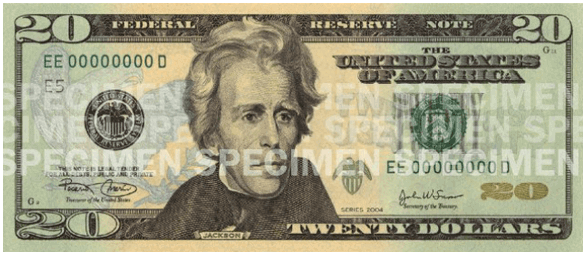 Ray's New Primary Arithmetic
Ray's New Primary Arithmetic
Ray's New Primary Arithmetic
Ray's New Primary Arithmetic


 Ray's New Primary Arithmetic
Ray's New Primary Arithmetic
Ray's New Primary Arithmetic
Ray's New Primary Arithmetic

Gather one twenty-dollar bill, two ten-dollar bills, four five-dollar bills, and four one-dollar bills per child. Children might create their own pretend paper money with paper, pens, and crayons or markers.
Have children complete the steps below.
Have children practice until they perfectly master each task.
STEP 1 - WHAT IS A TWENTY-DOLLAR BILL?
Children identify the twenty-dollar bill.

STEP 2 - COMBINE AND SEPARATE
Children combine and separate groups of one, five, ten, and twenty-dollar bills.
STEP 3 - PLAY STORE